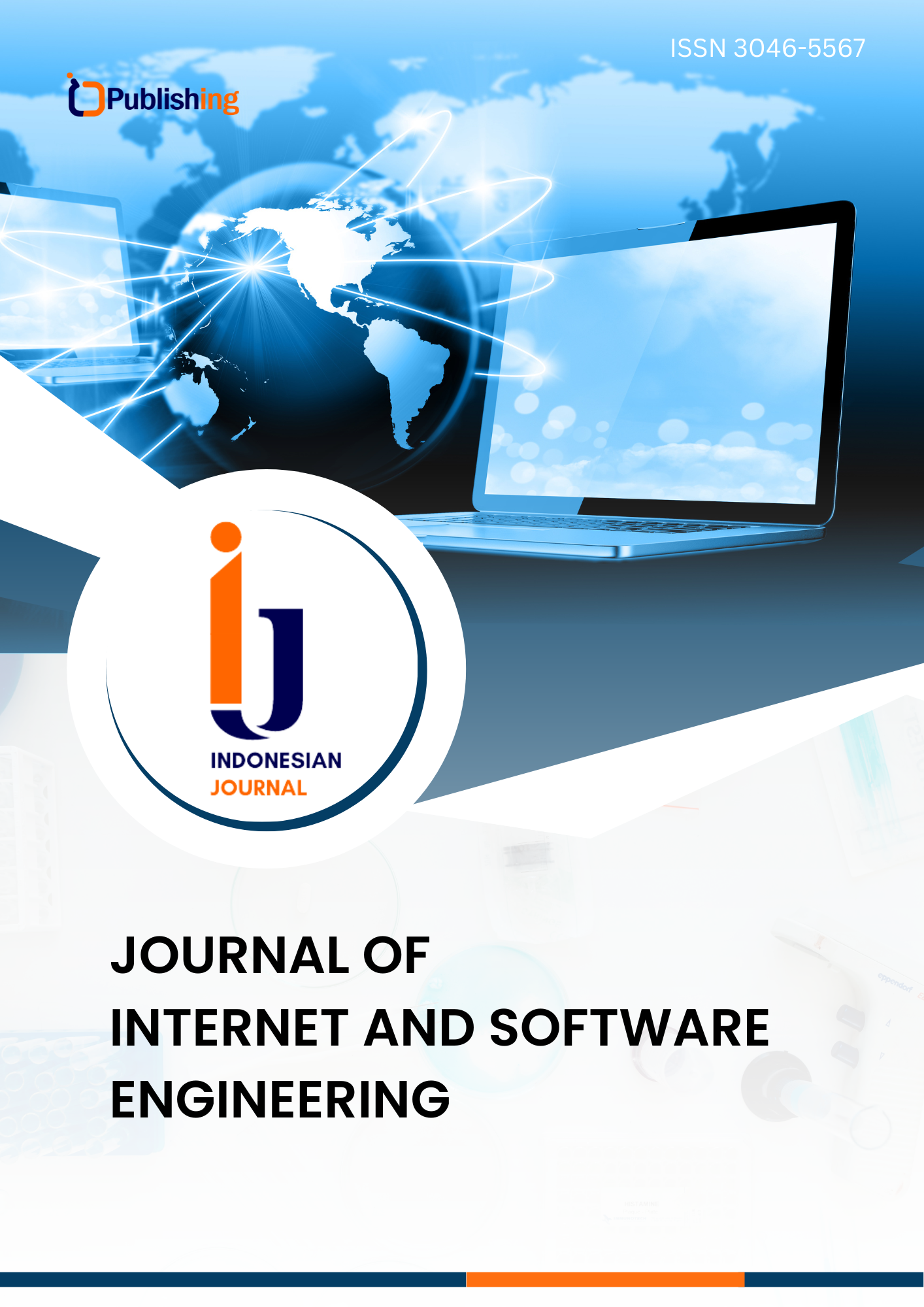Meningkatkan Efisiensi Pengambilan Keputusan Publik melalui Kecerdasan Buatan
DOI:
https://doi.org/10.47134/pjise.v1i2.2401Keywords:
Kecerdasan Buatan, Digitalisasi, Pengambilan Keputusan PublikAbstract
Kecerdasan Buatan (AI) telah menjadi fokus utama dalam membentuk masa depan teknologi dan pemecahan masalah di berbagai bidang, termasuk dalam konteks pengambilan keputusan publik. Tujuan dari penelitian ini adalah untuk mengeksplorasi kemungkinan implementasi AI dalam domain publik dan untuk menemukan sejauh mana AI dapat bertanggung jawab mendukung atau mengambil alih keputusan tertentu di lembaga pemerintahan. Penelitian ini menggunakan teori pengambilan keputusan oleh Herbert Simon tentang Bounded Rationality (rasionalitas terbatas). Penelitian ini menggunakan metode kualitatif berupa studi literatur (literature review) dengan menganalisis berbagai artikel, jurnal, dan literatur terkait tentang penerapan kecerdasan buatan dan pengambilan keputusan publik. Melalui metode tinjauan literatur yang komprehensif, ditemukan bahwa AI dapat mengoptimalkan proses pengumpulan, analisis, dan interpretasi data yang kompleks, serta memfasilitasi prediksi yang lebih akurat. Strategi implementasi AI yang efektif mencakup pengembangan model AI yang kuat, pelatihan sumber daya manusia yang berkualitas, serta perancangan kebijakan yang memperhatikan aspek etika dan keamanan data. Hasil penelitian ini memberikan pemahaman yang lebih baik tentang potensi AI dalam meningkatkan efisiensi pengambilan keputusan publik dan menyoroti pentingnya integrasi teknologi ini dalam berbagai bidang administrasi publik. Kesimpulannya, penggunaan AI sangat menjanjikan dalam membentuk sistem pengambilan keputusan publik yang lebih responsif, adaptif, dan efisien di era digital ini.
References
Alexopoulos, C., Lachana, Z., Androutsopoulou, A., Diamantopoulou, V., Charalabidis, Y., & Loutsaris, M. A. (2019). How Machine Learning is Changing e-Government. Proceedings of the 12th International Conference on Theory and Practice of Electronic Governance, 354–363. https://doi.org/10.1145/3326365.3326412 DOI: https://doi.org/10.1145/3326365.3326412
Aslam, F. (2023). The Impact of Artificial Intelligence on Chatbot Technology: A Study on the Current Advancements and Leading Innovations. European Journal of Technology, 7(3), 62–72. https://doi.org/10.47672/ejt.1561 DOI: https://doi.org/10.47672/ejt.1561
Babu, S., & Kanaga, R. (2022). Leveraging Artificial Intelligence for Public Sector Service Delivery: A Review. International Journal of Information Management, 67, 102504.
Bory, P., Natale, S., & Trudel, D. (2021). Artificial Intelligence. In Digital Roots (pp. 95–114). De Gruyter. https://doi.org/10.1515/9783110740202-006 DOI: https://doi.org/10.1515/9783110740202-006
Bostrom Nick. (2014). Superintelligence: Paths, Dangers, Strategies. Oxford University Press.
Bovens, M., & Hart, P. (2005). Evaluating public accountability. B En M - Beleid En Maatschappij.
Cantador, I., Cortés-Cediel, M. E., Segura-Tinoco, A., & Rodríguez Bolívar, M. P. (2023). Trends and challenges of e-government chatbots: Advances in exploring open government data and citizen participation content. Government Information Quarterly, 40(4), 101877. https://doi.org/10.1016/j.giq.2023.101877 DOI: https://doi.org/10.1016/j.giq.2023.101877
Chen, T., Gascó-Hernandez, M., & Esteve, M. (2024). The Adoption and Implementation of Artificial Intelligence Chatbots in Public Organizations: Evidence from U.S. State Governments. The American Review of Public Administration, 54(3), 255–270. https://doi.org/10.1177/02750740231200522 DOI: https://doi.org/10.1177/02750740231200522
Chohan, S. R., & Hu, G. (2020). Strengthening digital inclusion through e-government: cohesive ICT training programs to intensify digital competency. Information Technology for Development, 28, 16–38. https://api.semanticscholar.org/CorpusID:228819475 DOI: https://doi.org/10.1080/02681102.2020.1841713
Dandale, S., Sharma, R., & Gupta, M. (2023). Leveraging AI for Process Automation in Government Organizations: A Case Study Approach. Journal of Government Information Systems, 35(2), 187-201.
Dreyling, M., Smith, J., & Wang, L. (2022). Challenges in the Implementation of Artificial Intelligence in Government: A Review. Government Information Quarterly, 45(1), 101561.8
El, D., Malik, H., Nurmanto, A., Mahendra Putra, J., & Saputro, A. A. (2023). Analisis Efisiensi Birokrasi dalam Administrasi Publik: Tinjauan Terhadap Proses Pengambilan Keputusan. 1(3), 232–237. https://doi.org/10.55606/eksekusi.v1i3.525
Engin, Z., & Treleaven, P. C. (2019). Algorithmic Government: Automating Public Services and Supporting Civil Servants in using Data Science Technologies. Comput. J., 62, 448–460. https://api.semanticscholar.org/CorpusID:70022658 DOI: https://doi.org/10.1093/comjnl/bxy082
Fjeld, C., Achten, N., Hilligoss, H., Nagy, A., & Srikumar, M. (2020). Principled Artificial Intelligence: Mapping Consensus in Ethical and Rights-based Approaches to Principles for AI Terms of Use Share Your Story. http://nrs.harvard.edu/urn-3:HUL.InstRepos:42160420 DOI: https://doi.org/10.2139/ssrn.3518482
Floridi, L., & Cowls, J. (2019). A Unified Framework of Five Principles for AI in Society. Harvard Data Science Review. https://doi.org/10.1162/99608f92.8cd550d1 DOI: https://doi.org/10.2139/ssrn.3831321
Gandomi, A., & Haider, M. (2015). Beyond the hype: Big data concepts, methods, and analytics. International Journal of Information Management, 35(2), 137–144. https://doi.org/10.1016/j.ijinfomgt.2014.10.007 DOI: https://doi.org/10.1016/j.ijinfomgt.2014.10.007
Harahap, A. F. R., & Harahap, A. M. (2023). Peran digitalisasi dalam meningkatkan partisipasi publik pada pengambilan keputusan tata negara. Jurnal EDUCATIO: Jurnal Pendidikan Indonesia, 9(2), 769. https://doi.org/10.29210/1202323208 DOI: https://doi.org/10.29210/1202323208
Hastuti, R. (2023). Ethical Considerations in the Age of Artificial Intelligence: Balancing Innovation and Social Values. In West Science Social and Humanities Studies (Vol. 01, Issue 02). DOI: https://doi.org/10.58812/wsshs.v1i02.191
Heikkila, T., & Gerlak, A. K. (2013). Building a Conceptual Approach to Collective Learning: Lessons for Public Policy Scholars. Policy Studies Journal, 41(3), 484–512. https://doi.org/10.1111/psj.12026 DOI: https://doi.org/10.1111/psj.12026
Hoole, F. W. (1984). The Foundations of Policy Analysis. By Garry D. Brewer and Peter deLeon. (Homewood, Ill.: Dorsey Press, 1983. Pp. xvi + 476. $24.00.) - The Logic of Policy Inquiry. By David C. Paris and James F. Reynolds. (New York: Longman, 1983. Pp. xii + 276. $25.00, cloth; $12.95, paper.). American Political Science Review, 78(1), 292–293. https://doi.org/DOI: 10.2307/1961359 DOI: https://doi.org/10.2307/1961359
Ingraham, P. W., & Rosenbloom, D. H. (1989). The new public personnel and the new public service. International Journal of Public Administration, 21, 995–1025. https://api.semanticscholar.org/CorpusID:153460570 DOI: https://doi.org/10.1080/01900699808525330
Kaplan, A., & Haenlein, M. (2020). Rulers of the world, unite! The challenges and opportunities of artificial intelligence. Business Horizons, 63(1), 37–50. https://doi.org/10.1016/j.bushor.2019.09.003 DOI: https://doi.org/10.1016/j.bushor.2019.09.003
Khalkar, R. G., Dikhit, A. S., & Goel, A. (2021). Handwritten Text Recognition using Deep Learning (CNN & RNN). IARJSET, 8(6), 870–881. https://doi.org/10.17148/IARJSET.2021.86148 DOI: https://doi.org/10.17148/IARJSET.2021.86148
Kotsiantis, S. B., Zaharakis, I. D., & Pintelas, P. E. (2006). Machine learning: a review of classification and combining techniques. Artificial Intelligence Review, 26(3), 159–190. https://doi.org/10.1007/s10462-007-9052-3 DOI: https://doi.org/10.1007/s10462-007-9052-3
Lazer, D. M. J., Pentland, A., Watts, D. J., Aral, S., Athey, S., Contractor, N., Freelon, D., Gonzalez-Bailon, S., King, G., Margetts, H., Nelson, A., Salganik, M. J., Strohmaier, M., Vespignani, A., & Wagner, C. (2020). Computational social science: Obstacles and opportunities. Science, 369(6507), 1060–1062. https://doi.org/10.1126/science.aaz8170 DOI: https://doi.org/10.1126/science.aaz8170
Lehrke, J. P. (2014). Public Administration and the Modern State: Assessing Trends and Impact. https://api.semanticscholar.org/CorpusID:203279688
Republik Indonesia. 2009. Undang-Undang Republik Indonesia No. 25 Tahun 2009, pasal 25 (1) tentang Pelayanan Publik. Djambatan IKAPI. Jakarta.
PwC (2017) Sizing the prize What’s the real value of AI for your business and how can you capitalize? Available at: https://www.pwc.com/gx/en/news-room/docs/report-pwc-ai-analysis-sizing-the-prize.pdf
Rahwan, I. (2018). Society-in-the-loop: programming the algorithmic social contract. Ethics and Information Technology, 20(1), 5–14. https://doi.org/10.1007/s10676-017-9430-8 DOI: https://doi.org/10.1007/s10676-017-9430-8
Rogers, Y., Sharp, H., & Preece, J. (2018). Interaction Design: Beyond Human-Computer Interaction. https://api.semanticscholar.org/CorpusID:61037268
Rowe, G., & Frewer, L. J. (2000). Public Participation Methods: A Framework for Evaluation. Science, Technology, & Human Values, 25(1), 3–29. http://www.jstor.org/stable/690198 DOI: https://doi.org/10.1177/016224390002500101
Sah Kha Mei Zsazsa, C., & Sitepu, E. (2023). Implementasi Artificial Intelligence pada Pelayanan Publik. All Fields of Science J-LAS, 3(3). https://j-las.lemkomindo.org/index.php/AFoSJ-LAS/index DOI: https://doi.org/10.58939/afosj-las.v3i3.616
Salvatore Rocco. (2022). Implementing and Managing Algorithmic Decision-Making in the Public Sector. DOI: https://doi.org/10.31235/osf.io/ex93w
Sullivan, H., & Skelcher, C. (2002). Working Across Boundaries. Macmillan Education UK. https://doi.org/10.1007/978-1-4039-4010-0 DOI: https://doi.org/10.1007/978-1-4039-4010-0
Taddeo, M., & Floridi, L. (2018). How AI can be a force for good. Science, 361(6404), 751–752. https://doi.org/10.1126/science.aat5991 DOI: https://doi.org/10.1126/science.aat5991
Vinuesa, R., Azizpour, H., Leite, I., Balaam, M., Dignum, V., Domisch, S., Felländer, A., Langhans, S. D., Tegmark, M., & Fuso Nerini, F. (2020). The role of artificial intelligence in achieving the Sustainable Development Goals. Nature Communications, 11(1), 233. https://doi.org/10.1038/s41467-019-14108-y DOI: https://doi.org/10.1038/s41467-019-14108-y
Wachter, S., Mittelstadt, B., & Floridi, L. (2017). Transparent, explainable, and accountable AI for robotics. Science Robotics, 2(6). https://doi.org/10.1126/scirobotics.aan6080 DOI: https://doi.org/10.1126/scirobotics.aan6080
Wang, Y., & Aviles, C. (2023). Artificial Intelligence Techniques for Policy-Making: A Systematic Review. Policy Sciences, 56(1), 187-205.
Wirtz, B. W., Weyerer, J. C., & Sturm, B. J. (2020). The Dark Sides of Artificial Intelligence: An Integrated AI Governance Framework for Public Administration. International Journal of Public Administration, 43(9), 818–829. https://doi.org/10.1080/01900692.2020.1749851 DOI: https://doi.org/10.1080/01900692.2020.1749851
Witten, I. H., Frank, E., Hall, M. A., & Pal, C. J. (2016). Data Mining: Practical Machine Learning Tools and Techniques. In Biomedical Engineering Online - BIOMED ENG ONLINE (Vol. 4).
Yuan, Q., Zhang, H., Deng, T., Tang, S., Yuan, X., Tang, W., Xie, Y., Ge, H., Wang, X., Zhou, Q., & Xiao, X. (2020). Role of Artificial Intelligence in Kidney Disease. International Journal of Medical Sciences, 17(7), 970–984. https://doi.org/10.7150/ijms.42078 DOI: https://doi.org/10.7150/ijms.42078
Yudoprakoso, Paulus Wisnu. (2019). KECERDASAN BUATAN (Artificial Intelligence) SEBAGAI ALAT BANTU PROSES PENYUSUNAN UNDANG-UNDANG DALAM UPAYA MENGHADAPI REVOLUSI INDUSTRI 4.0 DI INDONESIA. http://journal.trunojoyo.ac.id/shi
Zuiderwijk, A., Chen, Y.-C., & Salem, F. (2021). Implications of the use of artificial intelligence in public governance: A systematic literature review and a research agenda. Government Information Quarterly, 38(3), 101577. https://doi.org/https://doi.org/10.1016/j.giq.2021.101577 DOI: https://doi.org/10.1016/j.giq.2021.101577
Downloads
Published
How to Cite
Issue
Section
License
Copyright (c) 2024 Talitha Hurin Salsabila, Tri Mei Indrawati, Revienda Anita Fitrie

This work is licensed under a Creative Commons Attribution-ShareAlike 4.0 International License.










